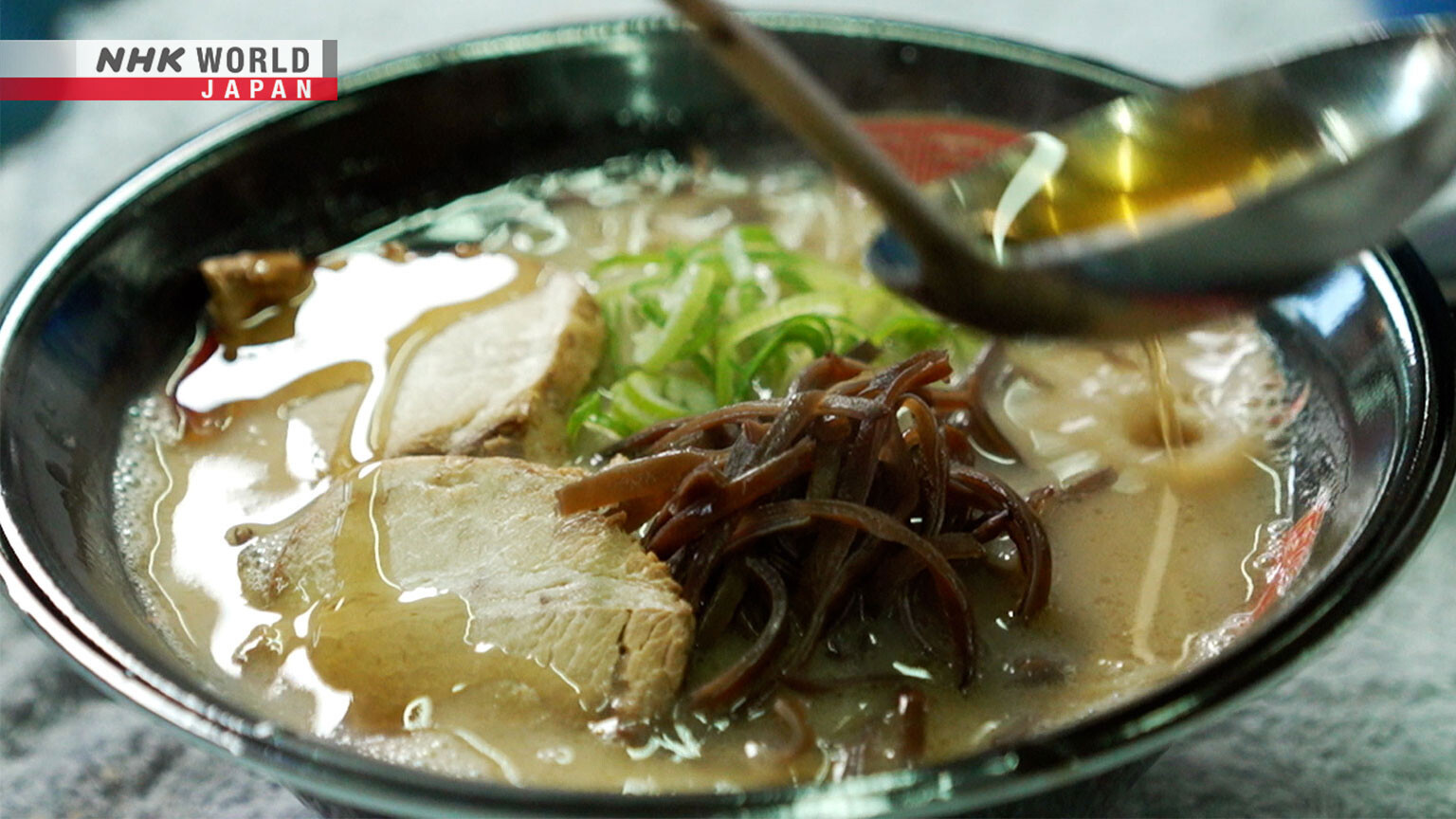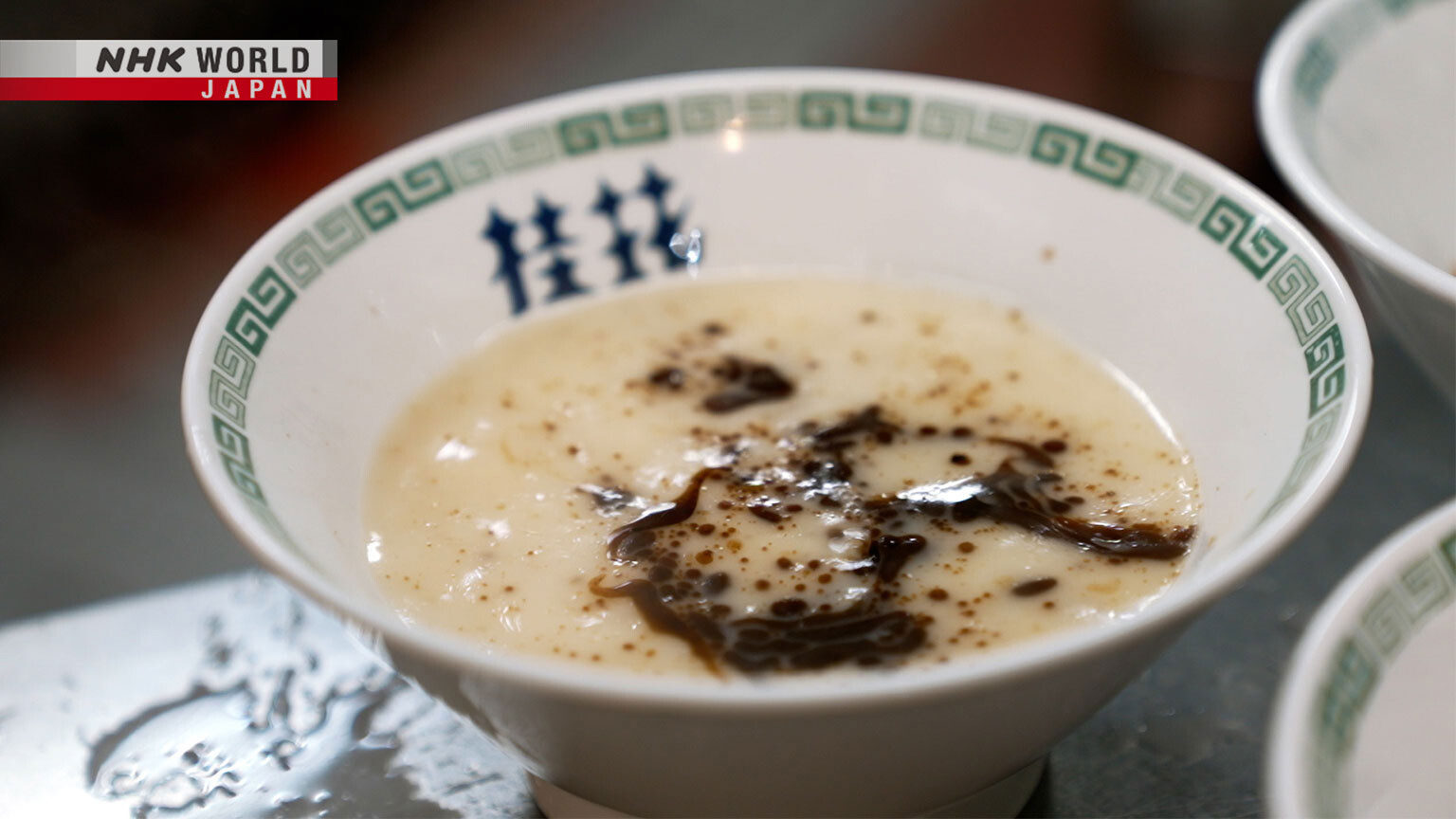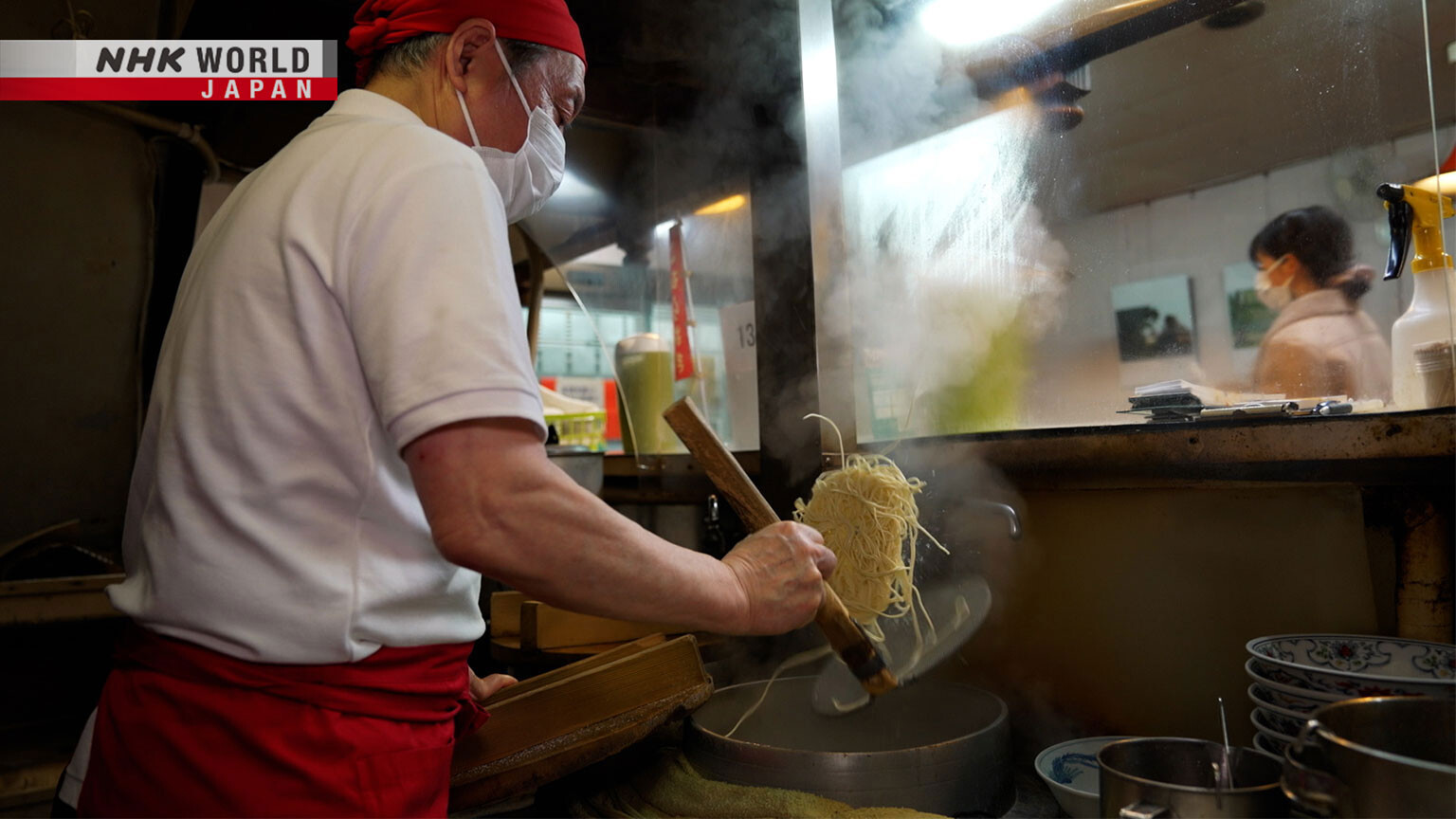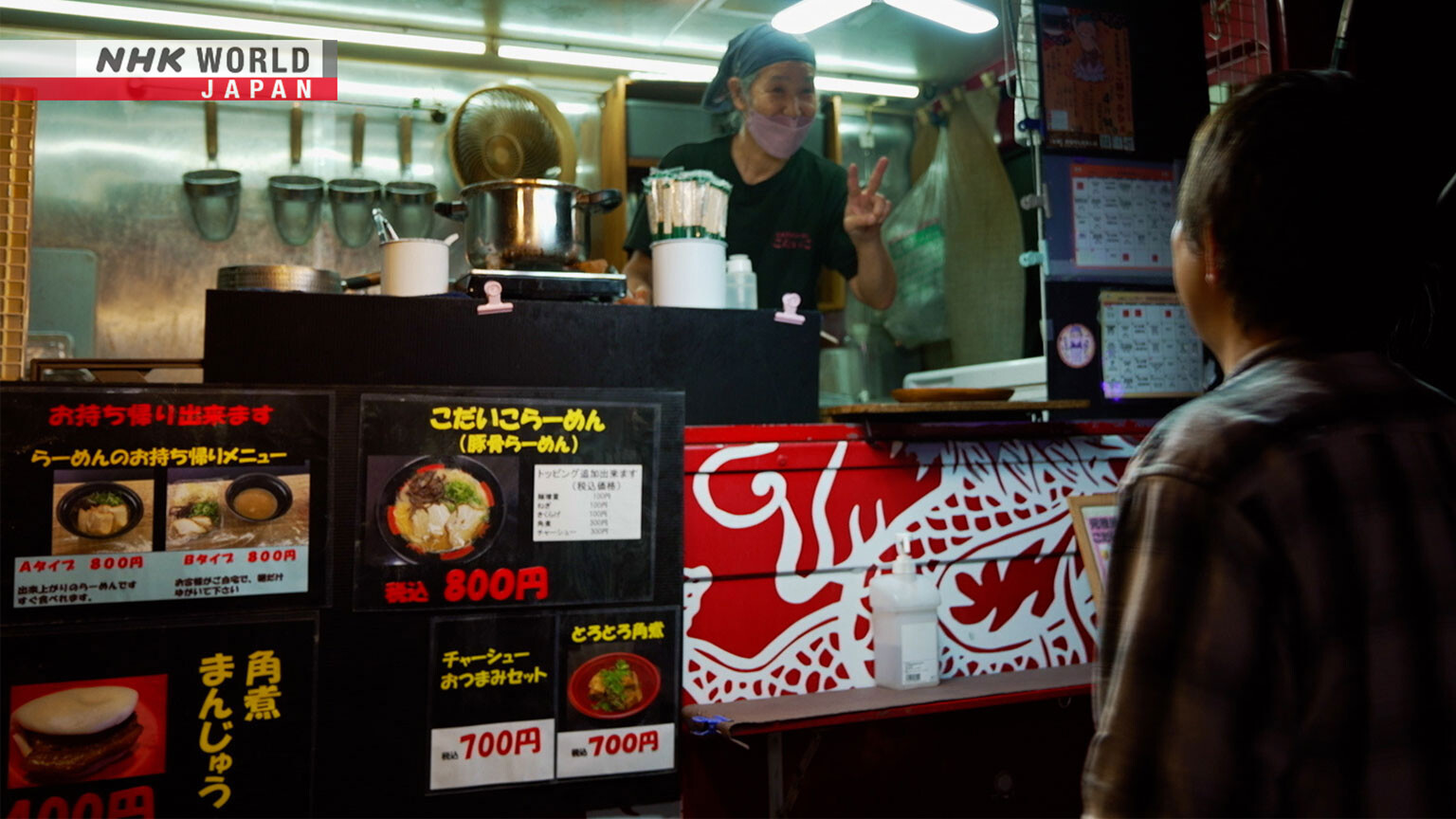KUMAMOTO
A bowl of resilience! The unique, garlic-powered tonkotsu ramen that reignited the spirit of Kumamoto post-quake!




Transcript
Ramen Japan!
This time, we're in Kumamoto.
Unveiling the secrets of uniquely evolved tonkotsu ramen!
Welcome to Japan, the land of ramen!
Kumamoto lies almost at the center of Kyushu.
In the northern part of the prefecture, there's Tamana.
It's a small city of about 60,000 people.
And it's kind of a big deal when it comes to the ramen of Kumamoto.
President of the Tamana Ramen Association, Inomoto Hiroyuki.
There was a master from Kurume who started from a food stall.
He was generous enough to teach anyone who wanted to learn.
That master was Shikasho Hidemitsu.
In 1952, he established Kumamoto's first tonkotsu ramen shop..
He brought with him a style of ramen from Kurume, the birthplace of tonkotsu ramen.
The Kurume style uses a special wide brimmed pot called a "hagama," in which pork bones are continuously boiled.
With Shikasho's shop as the launching point, tonkotsu ramen spread throughout Tamana.
Today, it's come to be known and loved by locals as Tamana ramen.
Inomoto's shop, established in 1963, has continued using "hagama."
The soup is made only from pork bones. We use backbone and hock.
But Tamana ramen features something that isn't found in Kurume Ramen.
Thank you for waiting. Would you like some garlic?
Please.
Staff sprinkle garlic chips according to customer preference.
For this regular customer...
It's neither too sweet nor too salty. Just the right flavor.
Perfect. Delicious.
Tamana, where Kurume tonkotsu ramen was introduced.
From here, Kumamoto ramen began.
Next, we visit the prefectural capital, Kumamoto City.
Population 740,000.
100% of Kumamoto city's tap water is supplied from its abundant groundwater sources,
which is rare for an urban area of its size.
And this naturally delicious water is part of what makes...
Kumamoto ramen!
The city's tourism authority operates an information site for Kumamoto ramen shops.
Okawa Shigeru helps oversee the site.
There's something so comforting about eating it...
I try all sorts, but I feel ours might be the best. Sorry.
We made our way to a Kumamoto ramen shop that's listed on the site.
This shop was founded in 1957.
It's a pork bone soup served with medium-thick straight noodles.
But as for this black liquid floating on top?
In fact, it's oil made with garlic.
Sliced garlic and heated lard are put into a specialized mixer, finely crushed, and thrown into a hot wok.
It's fried for about 15 minutes.
Not to overcook, it requires constant attention.
The smell of garlic permeates everywhere. It's quite a tough process.
And voila!
That's how the black topping is made.
It adds further depth and a hint of bitterness to the soup.
It makes you want to eat with gusto.
I have an important job later on, so I thought I'd get some energy.
Whenever I need to boost my spirits, I go for garlic ramen.
I sweated a bit, but I feel energized.
Kumamoto ramen began with three men.
One of them was Yamanaka Yasutoshi.
The shop he opened in the city is still going strong.
His son, and second-generation owner, Yamanaka Shizuka.
People were talking about this delicious ramen shop in Tamana.
So my father went to eat there.
In 1953, Yasutoshi and his two friends visited a ramen shop in Tamana that was gaining notoriety.
It was the one opened by Shikasho, serving Kurume ramen.
Inspired by its taste, the three each opened their own shops in the city.
Yasutoshi opened his in 1954.
A year later, he arrived at an idea.
And that idea, was garlic.
We make the broth from bones, so it has a particular animal scent.
Garlic helps suppress that smell, and it also stimulates the appetite.
With garlic, we established our own distinct consistent taste.
Yasutoshi's creation, the garlic chip topping, became a staple of Kumamoto ramen.
My dad always said, It's just ramen, but it's still ramen.
In 1988, Shizuka took the helm, and continued to refine his ramen.
Nowadays, everyone's used to good food. People have become gourmet.
So I subtly elevate the flavor to adapt to people's evolving tastes.
The flavor has improved significantly, if I may say so.
I like the garlic chips. They're not too strong.
The soup and noodles are tasty. Everything is in perfect harmony.
It lifts the spirits. Feels like it energizes.
When it comes to Kumamoto ramen and garlic, there's another shop that can't be excluded.
This one, founded in 1955.
The founder's name was Hisatomi Satsuki.
At the time, she was 29 years old.
Her daughter Mizuyo had been helping in the shop since she was young.
She remembers her mother trying a new garlic topping.
From the way the garlic was chopped to how frying would change its taste.
She was very studious, always trying to figure out how to best match the soup.
Around 1965, Satsuki finally settled on a flavor that satisfied her.
It involved using oil fried with garlic and aromatics in lard.
Upon tasting her mother's garlic oil, Mizuyo spontaneously said a certain phrase.
This is really magical oil I said.
Then she said, well, if it's magical oil, let's call it "mayu."
Taking the "ma" from the Japanese word for magic and "yu" for "oil," mayu was coined.
This shop which created a new flavor of Kumamoto ramen, opened a Tokyo branch.
Thus, Kumamoto Ramen topped with "mayu" became widely known.
I remember when I'd say thank you to customers at the shop.
When they would say thank you in return, it would really energize me.
It reminds me of that. "Thank you" is like a magical phrase.
It energizes both sides.
Although it's been 13 years since stepping away from the shop,
Mizuyo still regularly visits in search of the magical taste of the garlic oil.
The Kumamoto ramen that started in Tamana.
Culinary pioneers added a unique touch to garlic, with the idea of using it as a topping.
That topping continues to energize customers.
And it also energizes the people who serve that ramen.
A person determined to preserve the flavor born in Tamana and loved throughout Kumamoto.
Murata Kimie.
She travels around the prefecture in her food truck, serving ramen.
My ramen is close to Tamana's. It's pure pork bone.
No vegetables, chicken stock, or anything else. Nice and simple.
Kimie's father, Minetoshi, opened a ramen shop in Tamana.
Later, he moved the shop to Kumamoto city and continued business.
His daily routine of soup-making made it a popular shop.
Kimie also worked at the shop, supporting her father for 40 years.
But in January 2016, her father closed its doors due to his advanced age.
Then, just three months later...
The earthquake's toll was heavy, impacting around 200,000 homes in the prefecture.
Her father's home also sustained damage.
However, the shop's bowls that were in storage were unscathed.
Not even one was broken.
Seeing that, my father said, "Could this be a message?"
We took it as a sign to keep going.
She decided to bring the comfort of her father's ramen to those in temporary shelters.
People would say, "It's so good it brings tears to my eyes."
I traveled around to encourage those in disaster affected areas, to lift their spirits.
But instead, it was they who encouraged me.
Their resilience was so inspiring.
Currently, Kimie works six days a week, traveling around the prefecture in her food truck, delivering ramen.
People often tell me not to quit, or to at least pass it on to someone.
When I consider my years, I'd be smart to find a willing successor.
I'd be happy to pass on the torch if someone would step forward.
Until then, I press on with all I have.
Wouldn't you like to try some energy-boosting Kumamoto ramen yourself?
Come pay a visit for the best bowl you've ever had.